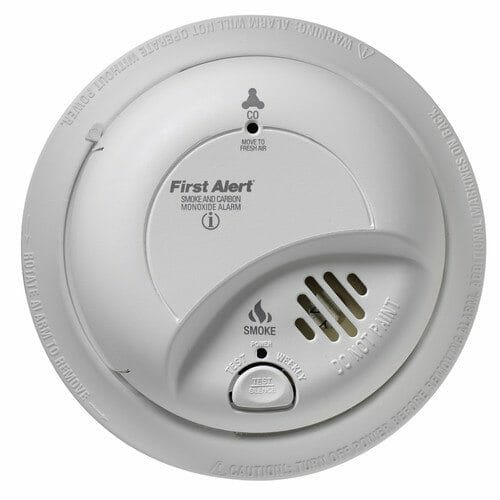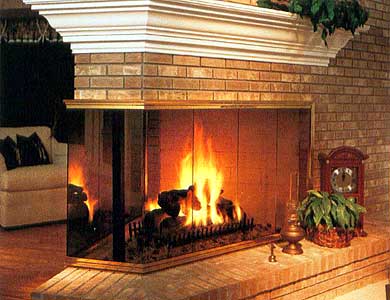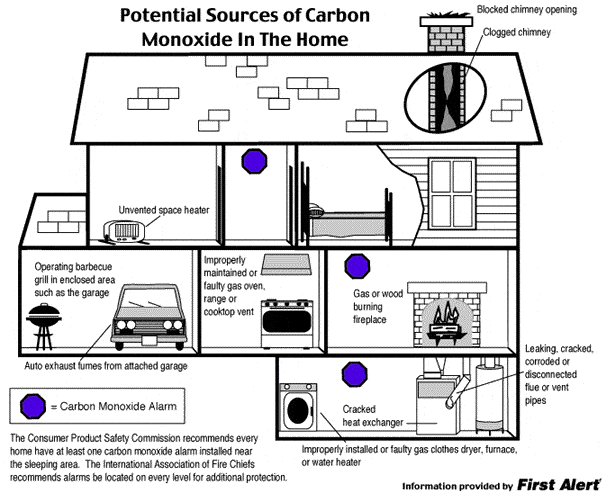Where are Carbon Monoxide Detectors Required


CJ
Lead Editor
CJ is the Lead Editor at BuyersAsk, ensuring all content meets our high standards for accuracy and clarity. With a background in real estate and renovation, CJ helps homeowners navigate complex buying decisions.
View Full Profile →
Carbon monoxide (CO) is a tasteless, colorless, odorless and poisonous gas produced by burning fossil fuels, such as natural gas, propane, wood, etc.
Where do they go?
Local building jurisdictions, codes and the manufacturer’s recommended installation requirements generally require the following:
-
Each level of a home should have a CO alarm. For example, if the home is two-stories, then a minimum of 2 CO alarms/detectors are required, if three-stories, then a minimum of three are required. There should also be one in the basement if the home has one.
-
One in each bedroom hallway, and generally within 15 feet of all bedroom doors.
-
Hallways – if 40 feet long or longer; two may be required.
-
At least 4 inches from all exterior wall/ceiling corners and at least 3 feet from supply or return vents (check manufacture’s recommendations for your particular detector – as it varies from manufacture to manufacture).
-
They can be put at any height. They do not need to be put on the ceiling. CO detectors may be put low or high on a wall, or on the ceiling. The reason is that carbon monoxide is present at all levels, versus smoke which rises to the high areas, therefore we put smoke alarms up high (note that a few manufactures detectors are not designed to go on ceiling areas – check the installation instructions).
For added protection put one in each bedroom. They are generally not required in each bedroom, but this is recommended by the Fire Marshall and the manufacture.

Bedrooms with a fireplace
If a bedroom has a gas or wood-burning fireplace, then there should be a carbon monoxide detector in it as well. This applies even if there is one in the hallway outside of the bedroom. The reason for this is that even though there is one in the hallway outside the bedroom, should the bedroom door be closed, then the bedroom occupants may be overcome by carbon monoxide from the bedroom fireplace before the hallway alarm goes off.
GENERALLY – Do not place:
-
Within 15 feet of heating or cooking appliances
-
Near very humid areas like bathrooms or laundry rooms
-
In kitchen areas
-
In garages
What type can be used?
The carbon monoxide detector can be one of 3 types:
-
Battery-powered
-
Plug-in type
-
Hard-wired with a battery backup
Note
-
The carbon monoxide detector must produce a “distinct, audible alarm that clearly differentiates between a carbon monoxide alarm warning and a smoke detector warning”.
-
May use a combined detector as a smoke detector and carbon monoxide detector.
-
Remember: CO alarms should be installed according to the manufacturer’s instructions.
-
In newly built homes they must be hardwired, in older homes plug-ins and battery operated ones are generally acceptable.
Recent remodeling with a permit?
If the value was over $1,000. Then a Carbon Monoxide detector is usually required.
Does Every House Require a Carbon Monoxide Detector?
If the existing home has a fossil fuel burning heater or appliance, a fireplace or an attached garage – then one is required.
Electric homes with no fossil fuel burning devices like fireplaces, gas stoves, gas ovens, gas laundry dryers or attached garages, then generally CO detectors are not required. Note if there is an attached garage, then one or more will be required inside the home.
Know the Symptoms of CO Poisoning
Similar to the flu but without the fever. They include: dizziness, nausea, fatigue, irregular breathing and headache; however, there are even more symptoms that you should really know. (Learn about other symptoms that are much more serious )


